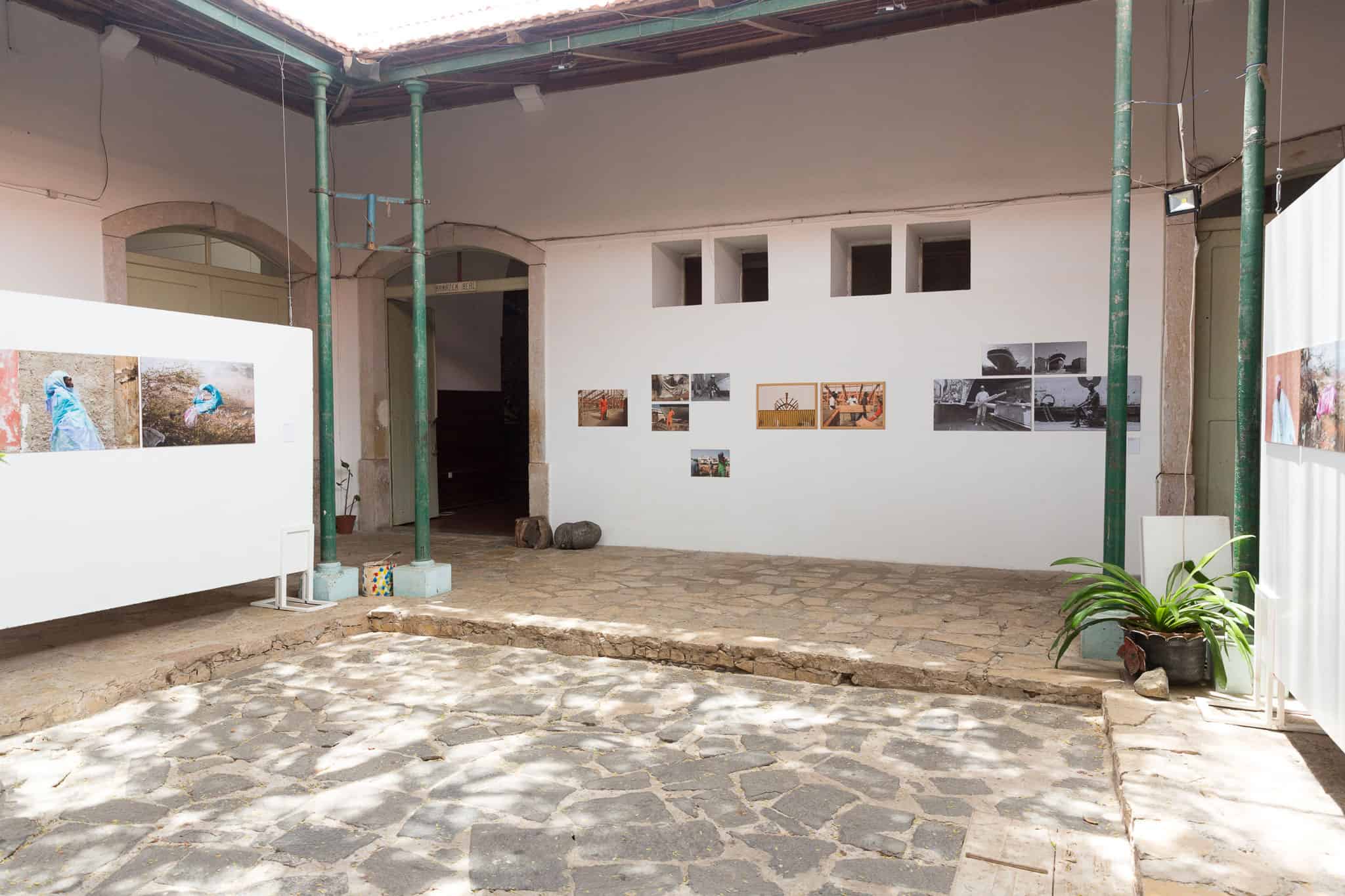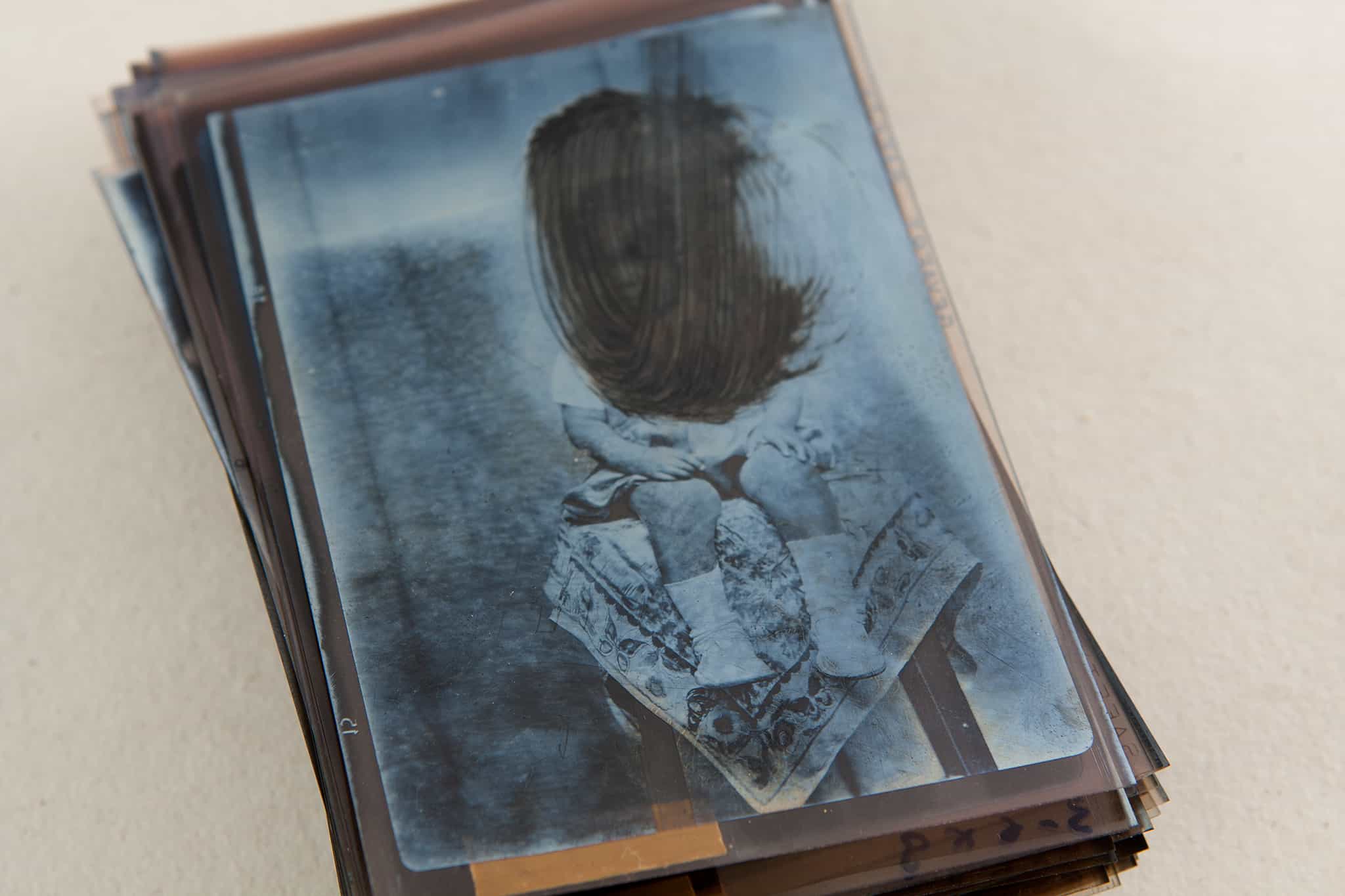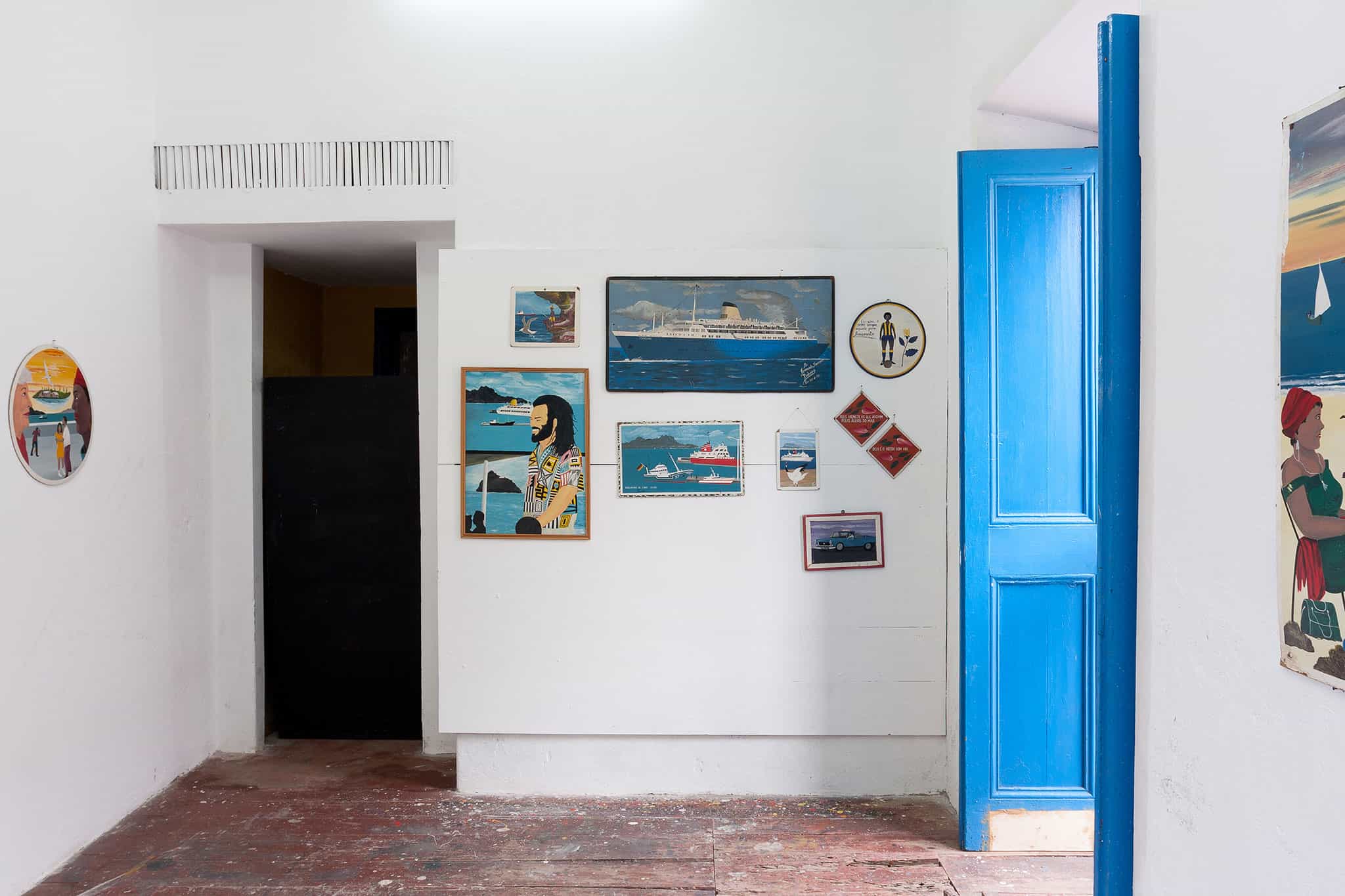If you are thinking about or starting a career as an art curator, you might be interested in knowing how to become a successful one. What does it actually mean to be a curator? And is this a homogeneous definition? How broad of a spectrum of activities do you have in front of you to choose from? What others do might provide some hints, especially, that the scenarios of a curator’s whereabouts might be surprisingly diverse and encouraging to find your own way and place as a curator – exactly as Diogo Bento did, who shared his experience as an emerging curator.

Diogo Bento
AW: Professionally, you are a photographer. But you are also a curator – quite an unusual one. Although you origin from Portugal, you are located in a very specific place: Cape Verde. Could you please tell us what brought you there?
DB: I’ve long been interested in Cape Verde, at about the time I moved to Lisbon and went to college, I started to get in touch with the mostly-cape-verdean population of the poor neighbourboords in the outskirts of the city; there my interest and acquaintance of the Cape Verdean culture grew stronger and more passionate.
That is where I learned about Amílcar Cabral, the revolutionary leader who started the liberation war and led Cape Verde and Guinea-Bissau to independence. Some years later, starting in 2010, and as part of my postgraduate degree, I started a photography project about the life and legacy of Amílcar Cabral, who I considered to be the unsung hero of the Portuguese revolution of ’74.
I conducted research in several archives both in Portugal, Cape Verde and Guinea-Bissau and followed his path through the places, landscapes and architectures he stepped on throughout his life.
During my stay in São Vicente at Cape Verde, where I currently live and work, I met the person responsible for the Foto Melo studio, a photographic studio that had been established by one family and been in business from 1890 to 1992. The family shared an interest in the conservation project that would focus on the collection and the studio.
I had previously worked in photography conservation and expanding my experience in Cape Verde was a very welcoming opportunity. Upon my return to Portugal, I applied for a Nov-art grant, which I eventually won, and was able to work on the Foto Melo photography collection for the next 6 months. What was supposed to be a short-term stay has turned into an 8 year (and counting) living experience.
In the end of the project, I got to curate an exhibition entitled Silver Mirror about the work I had been doing and the collection itself. A short documentary was also made for this occasion. I think it was the first time the photographs from the Foto Melo studio were shown to the public.
My interest for the Archive, both in terms of artistic practice and historical content, has been the backbone of my curatorial practice: I’m very much interested in the deconstruction of history and mainstream narratives. While busy with my formal studies, I paid a lot of attention to many artists that work in relation to the Archive, such as Aby Warburg, Gerhard Richter, Fischli and Weiss, Christian Boltanski, Zoe Leonard or Walid Raad. There is a sense of freedom and confrontation about working with archival material that I really enjoy.
AW: And how exactly does the place you currently live in influence your present curatorial practice?
DB: It’s mainly because of its history, it is unlike any other country in the world, and how it has unfolded into contemporary Cape Verde. The geo-political position of Cape Verde is also very telling: it’s not in the mainland, it sits in the Atlantic Ocean, being a strategic connection between Africa, Europe and the Americas.
So, naturally, where I am influences me in such a way that there are matters that one deals with that are specific to the place where you live. Thus I’m much more aware of certain issues and exposed to things that otherwise wouldn’t be the case. And my curatorial practice is specifically rooted in the local or regional context of where I live. As you’ve already said, Cape Verde is a very specific and special place and that is a very big motivation to keep assimilating with the local context and expand that knowledge into a global concern through my artistic and curatorial practice.

Partial view of the Catchupa Factory 2019 exhibition (curated by John Fleetwood); the work of Emídio Jozine (Moz) in the back and David Aguacheiro (Moz) on the sides
One of the many collective lunches held during the Catchupa Factory residency
Participant artists of Catchupa Factory 2017 discussing their work in preparation for the final presentation
AW: The context of the place also sketches a framework for African photographers with whom you work with within AOJE and Catchupa Factory curatorial initiatives. Could you please tell a bit more about these two?
DB: AOJE is the organization behind or responsible for the Catchupa Factory – New Photographers initiative. Catchupa Factory is a residency program dedicated to emerging artists and photographers from the Portuguese-speaking African countries (Angola, Mozambique, São Tomé and Príncipe, Guinea Bissau and Cape Verde). Our organization was founded in 2013 by a group of local photographers, after realizing that, although there was lack of education in the field, photography was becoming very popular and a growing activity among youngsters.
We wanted to act locally with a regional and international focus. So, initially we organized the Cape Verde International Photography Festival, with a very ambitious program with exhibitions all around the city of Mindelo and the adjacent island, both in conventional venues as well as public and informal spaces, alongside an educational and a residency program. Already on the 2nd edition we noticed that we were one step ahead of what the public was expecting or used to seeing. As mentioned before, we have a deficit of education programs relating to photography. Thus the public was not so educated in visual literacy, especially when it comes to contemporary photography and there was little basis for critical approach towards the exhibitions. Hence the lack of sustainability – not the financial one, but mostly in terms of public engagement.
That is why we decided to take a step back and focus on a more educationally oriented project.
The Catchupa Factory – New Photographers initiative was born in 2016 and we’re now on our 5th edition.
The context in which Cape Verde is inserted is very specific: we are a more or less isolated country sitting in the Atlantic Ocean off the coast of West Africa that belongs to the PALOP countries (Portugese-speaking African countries) These countries share a common past and a common language. Although the Portuguese language might create a bond or a comfort zone – for instance, it is very helpful in terms of teaching –, it is also a constraint in terms of visibility and a barrier towards opportunities outside of this colonial language zone. Basically, colonial language zones mean that the colonized countries will most likely engage with the former colonizer and other countries of the same colonial zone (be it Anglophone, Francophone or Lusophone) and not so much with other neighbouring countries. Language itself is a big barrier but so are historical ties.
We launch an international open call every year and the number of applications has been growing every new edition. The selection process is taken to very carefully and is one of the key aspects for the success of this initiative. We try to have as diverse of a group of artists as possible, applying a lot of attention, not only to artistic potential but also, to gender, race, age, nationality, financial and social background. The group has to be dynamic and allow more experienced photographers to lead but also must be able to learn from beginners. The cultural and personal exchange and experience between participants is crucial.
Our strategy has been to focus on a very strong educational program, mobility and international visibility. The educator has been from a country outside of the PALOP countries and, in the end, participants get in touch with international and renowned invited curators. We’ve been working with such educators and curators like John Fleetwood (South Africa), Michelle Loukidis (South Africa), Paula Nascimento (Angola), Sérgio Mah (Portugal) or António Júlio Duarte (Portugal) – we’re working with Akinbode Akinbiyi (German-Nigerian) for the next edition.
The results have been amazing. So far, we’ve worked with 30+ participants from the PALOP countries and a lot of them have gained international visibility as well as working and exhibiting opportunities after their participation in the residency. Some of the past participants worth mentioning are Flávio Cardoso (Ang), Indira Mateta (Ang), Sofia Yala (Ang), Ângelo Lopes (CV), Odair Monteiro (CV), Queila Fernandes (CV), David Aguacheiro (Moz), Emídio Jozine (Moz), Mauro Vombe (Moz), Yassmin Forte (Moz) or Herberto Smith (STM).
Most of these photographers were starting to develop their practice prior to their participation in the Catchupa Factory residency and were mostly involved in a kind of “social documentary” / story telling practice, although others were more experimental and “material”. What I’ve noticed is that the residency has totally revamped their approach to photography and their understanding of their own practice and creative potential. What I find very interesting in this process is that the island has been the battleground upon which the participants have found their way of embodying the concerns and expectations which they carry from their own local contexts. Common topics or issues dealt during the residency involve Identity (personal and colonial stories), gender, ecology, sense of belonging, deconstructing dominant narratives.
So, for the past 4 editions we’ve been creating a local archive of critical and contemporary views within a global framework. This excerpt from this year’s exhibition text sums it up perfectly (titled “Amongst Other Things”, curated by John Fleetwood):
“For most participants this quick encounter in and with São Vicente was a chance to look at a new space to reflect on ideas that they might have been thinking of. In this exploration, they found, amongst other things, themes that talk about the urgencies of our world: shifting and developing identities; rethinking histories and futures of culture, heritage, belonging and survival; expressions of gender; the fragile and powerful world of nature. In this process of searching and finding, photography is always a construct of things seen and things unseen, of showing and concealing ideas, always rendering certainties and ambiguities. In the same way we learn and understand knowledge as a continuum of things around us that can be uncovered, hidden or misplaced.”

Kitty Blunt (CV) installing her work for the Catchupa Factory 2019 exhibition
AW: Europe is a hub for photography, as it is for visual arts, in terms of events, competitions and festivals. And although it unarguably is an international environment, African artists might seem considerably unknown and unexposed. Do you agree with this statement?
DB: No, I don’t really agree with that statement. On one hand, there is a considerable number of events taking place in Africa: exhibitions, festivals, fairs, and many world-class museums have been opening in the last few years, Morocco and South Africa are leading this race. On the other hand, and most importantly, there are so many great artists doing incredible things. There is a solid and thriving art scene on the continent.
When you say unexposed, that really depends on the audience that you’re thinking about. African artists may be unknown to a European audience but definitely not to their peers and fellow curators. What I think that is lacking on the continent is financial support and investment in the arts and culture – starting from arts education. Fortunately, travelling inside Africa is has become easier and cheaper over the years, with now around 21 countries with Visa-free entry encouragement for collaboration between artists and curators and the development of the arts in general has risen.

Image from the series Cabral ka Morri, 2010
AW: So, looking at the artists you work with, but also looking at your own example: how does a photographer’s career look like and what are photographers’ perspectives as artists in Africa?
DB: I think the expectations are really good. I’ve seen a growing interest of international galleries, festivals and fairs in “African art”, there is also a growing number of galleries operating in, from and for Africa and the art market is also growing. But most of all, there is such a rich territory to work with, so many stories to be told, so much energy.
AW: What sounds promising from the perspective of a curator. What is that you enjoy most in your practice? And what is something that you dislike and would like to change?
DB: It’s definitely the chance to meet and work with other people; to push and engage in conversations with other artists; to discuss ideas and possibilities; and, in the end, to reinterpret contemporary artistic practices and translate them into exhibition form and to communicate with the public.
Not having a budget to pay for artists’ fees is not an excuse for not paying artists’ fees.
Negative from the Foto Melo collection showing silver mirroring degradation
Partial view of the exhibition Mundo Cão (“Dog World”), with works by the late Armando Pinheiro (co-curated with Elisângela Monteiro)
Opening of the exhibition Sixth Nature, with works of Lien Botha (ZA) and Edson Chagas (AO) at the Porto Photography Biennale
















